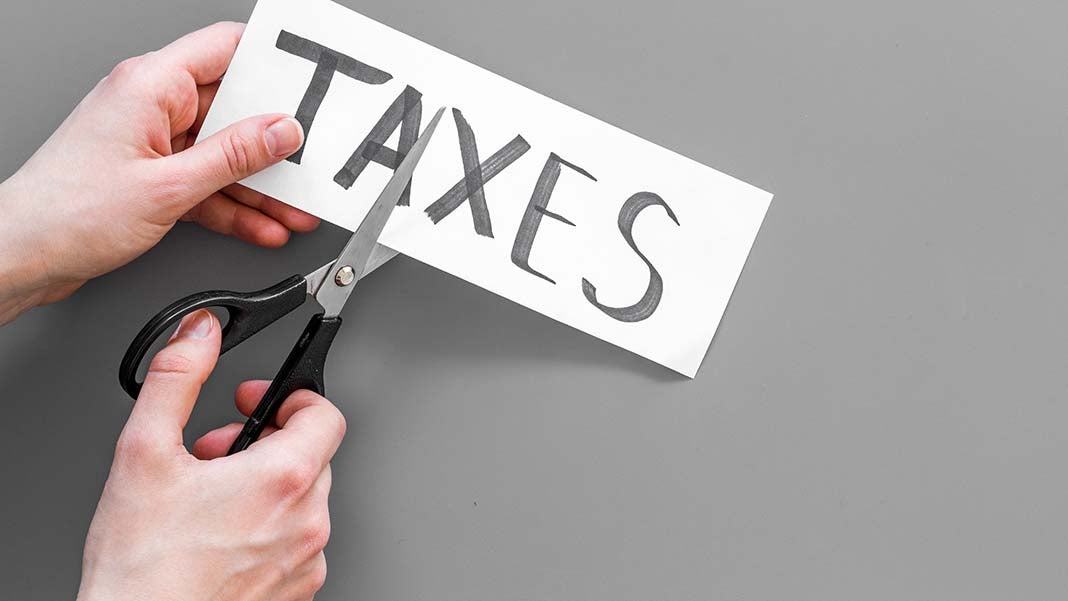5 Ways Small Business Owners Can Benefit from Trump Tax Cuts
By: Dale Goldberg

The end of last year’s news cycle was dominated by one story—Trump’s tax cuts. As a small business owner, you may wonder how it all impacts you. And now that we’re hurtling into fall, it won’t be long until you find out.
The focus may have been on big corporations, but there are perks baked in for small businesses too. Here are five ways you may benefit from this year’s tax cuts.
1. If Your Business is a Corporation, Your Tax Rate is Lower
The slashing of corporate tax rates may be one of the tax bills’ most newsworthy changes. Before the Tax Cuts and Job Act, corporations paid a federal tax rate of 15 – 35 percent. These same businesses can now enjoy a flat rate of 21 percent. While many of the tax cuts will sunset after 2025, this one is permanent.
If you’re structured as a C-corp, your taxes will go down. But pass-through entities—like limited liability corporations (LLCs) and S-corps—don’t get the same advantage. It may be tempting to change your business structure, but you shouldn’t make any rash decisions before speaking with a CPA as there are advantages and disadvantages to each different type of business entity as well as risks you may not be aware of.
2. Some Businesses Can Take a 20 Percent Income Deduction
If you are not structured as a C-corporation and don’t qualify for the reduced corporate tax rate, there may be another way to save.
Most small businesses operate as a pass-through entity (source: New York Times)—a sole proprietorship, partnership, LLC, trust, or S-corporation. It means you report profits and losses on your personal (vs corporate) tax return.
Starting this tax season, pass-through businesses can deduct 20 percent of their qualified business income. This new deduction—called Section 199A—is available if you earn less than $157,500 or $315,000 (if you file taxes jointly) (source: IRS).
Not sure if your business qualifies? You’re not alone. For months, the business community has been asking for clarification. Last month, the Treasury Department answered with a 184-page regulation.
20 percent of your income is no small chunk of change. If this deduction still leaves you scratching your head, don’t wait until April to figure it out. A certified public account can help.
3. You May Be Eligible for Bigger Write-Offs.
If your business requires equipment, you know how expensive replacing it can be. The IRS created the Section 179 deduction to help ease the sting. This allows you to take an immediate tax deduction, freeing up more money to grow your business.
Before Trump’s tax cuts, the maximum deduction was $500,000, and now it’s been boosted to $1,000,000. The new law also expands the definition of what type of property qualifies (source: IRS). This could be good news if you tie up a lot of income in equipment purchases every year.
4. You’re Less Likely to Get Charged the Alternative Minimum Tax (AMT)
If you know about alternative minimum tax (AMT), chances are you are not a fan. Basically, it’s a parallel tax system designed to stop wealthy taxpayers from taking too many deductions. If reading this gives you the chills, we have some good news: you’re a lot less likely to be slapped with AMT—and the changes are permanent.
In the past, AMT has been especially hard on small business owners who took the Section 179 deduction. If you’ve paid it in the past, start chatting with your accountant now. There’s still time to reduce your burden.
5. You Benefit When You Support Your Workers with Paid Family and Medical Leave
It didn’t garner as much attention, but lawmakers also included a credit to pay for your lower-wage workers’ family and medical leave. To be eligible for this tax credit, you must follow these guidelines (source: IRS):
- Your workers can’t make more than $72,000 per year.
- You must offer at least two weeks of paid family and medical leave for full-time employees every year.
- Your company’s paid family and medical leave must cover at least 50 percent of their income.
Depending on how much income you cover, your credit could range from 12.5 to 25 percent. The program isn’t permanent, though. Unless Congress extends it, the program will sunset by 2025.
Start Getting Organized for 2018 Taxes Now
Sure, you won’t know the exact figures until you have hashed it out, line by line, but it’s never too early to get organized. Start reviewing your taxes now and you may see more savings than you expect.












